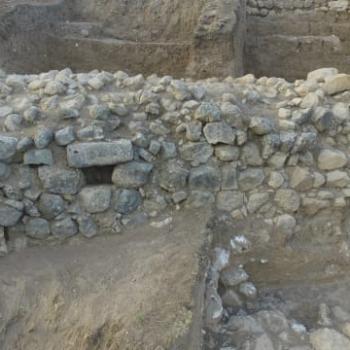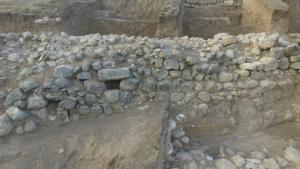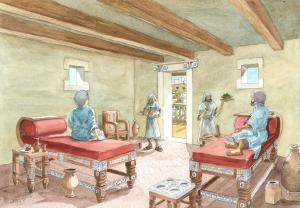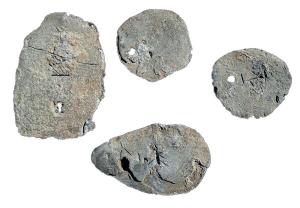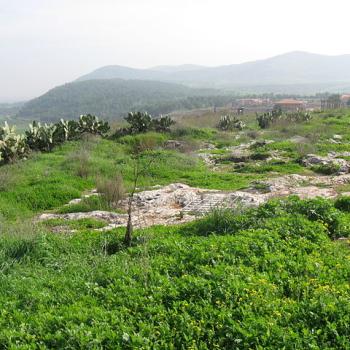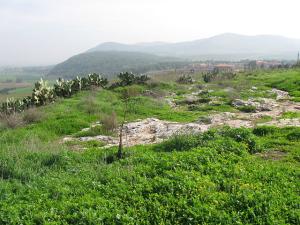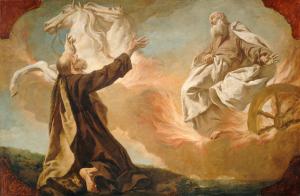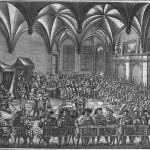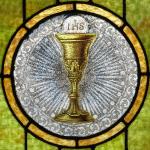
This is a reply to Calvinist apologist Matt Hedges’ article, “A Refutation of Common Arguments for Iconography” (Soli Deo Gloria Apologetics, 7-28-22). His words will be in blue.
*****
The first text commonly cited against us iconoclasts is the OT example of the bronze serpent made by Moses (the whole story of which is contained in the book of Numbers). They cite this to show that not all images are bad, and some are valid and are to be venerated.
I’ve written specifically about it, twice:
The Bronze Serpent: Example of Proper Use of Images [Feb. 2012]
Was Moses’ Bronze Serpent an Idolatrous “Graven Image?” [National Catholic Register, 2-17-20]
I answer:
[1]. It was not the bronze serpent itself who healed the Israelites who had been bitten by the snakes. Rather, it was Christ, as represented by the serpent, who healed the Israelites (John 3:14).
Of course. Everyone knows that already. A piece of bronze in and of itself does nothing except shine in the sun and make pretty pieces of art. John 3:14, however, doesn’t make that valid point. It’s simply a comparison of the serpent and Jesus both being “lifted up” (Jesus, in crucifixion): analogy and common Old Testament typology. Any healing obviously comes from God. He uses a visible symbol as the means by which He heals, just as He gives grace through the physical means of the sacraments (and appeared in a burning bush). This is no argument against the serpent as a permissible image, but rather, for it, because it represents Christ.
I just explained how this is Catholic teaching in my previous reply to you, earlier today. Trent, in declaring about images, referred to “the original subjects they represent.” St. Basil the Great taught that an “image” is an “imitation” of a “prototype” (The Holy Spirit, chapter 18, section 45). The bronze serpent was a little more complex than direct representation, though. The Hebrews in the wilderness were grumbling and complaining as usual. And so “the LORD sent fiery serpents among the people, and they bit the people, so that many people of Israel died” (Num 21:6, RSV). The people went to Moses and repented, and “Moses prayed for the people” (Num 21:7). God then told him: “Make a fiery serpent, and set it on a pole; and every one who is bitten, when he sees it, shall live” (Num 21:8).
So the serpent was not an image used for veneration, but rather, a visual representation of how God had judged them for complaining and lack of faith, and also how He forgave them by simultaneously reminding them with a visual image, of what had gone down. In other words, God was in effect saying, “continue to repent as a result of being visually reminded about how I may judge you again if you do not genuinely repent.” This is, I submit, a genuine, God-sanctioned use of an image, not for worship purposes, but for healing and remembrance of past sins. If someone was again bitten by a serpent, God provided a way for them to be healed, by casting their thoughts toward Him. Nothing in the story suggests that all images are bad or “anti-God” idolatrous things.
[2]. In 2 Kings 18:4, King Hezekiah destroyed the bronze serpent because the Jews were offering incense to it. This shows that the bronze serpent was never meant to receive any type of religious adoration or worship.
Exactly. Offering incense to it is idolatrous blasphemy, because it was not according to its proper use, as described by God to Moses. It was a corruption of the intended use. But a corruption of a thing is not the equivalent of the thing. Because some people fornicate, it doesn’t follow that all sexual intercourse is immoral. Within a valid marriage, it’s not only not wrong, but a great gift from God and the means of procreation: pour assistance in helping to create new human beings and eternal souls.
King Hezekiah “broke in pieces the bronze serpent that Moses had made” because “the people of Israel had burned incense to it” (2 Ki 18:4). That no more makes the serpent (image) intrinsically bad than Moses smashing the original tablets with the Ten Commandments (Ex 31:19) made them bad. In both cases, it was because the Jews had not properly followed God’s instructions. As explained in the previous section, the serpent was never intended to be venerated, let alone worshiped: which is reserved only for God in the Bible, Judaism, Catholicism, and larger Christianity. So using the serpent as an argument against veneration of images or icons is a non sequitur, since that was never its purpose.
The Romanists (as well as the Eastern Orthodox)
We’re Catholics, thank you. Why do use a pejorative title for us, but use the name that the Orthodox call themselves? Meanwhile, I call you what you call yourselves: Reformed Protestants or Calvinists. It’s a matter of simple courtesy.
also bring forward the fact that Scripture speaks of there being cherubim within the tabernacle.
I answer:
[1]. The controversy specifically has to do with whether or not it is okay to have images that are meant to represent God or not, and whether we ought to give religious veneration to said images. The issue is not with all images absolutely and whatsoever. The cherubim was never meant to represent God or Christ, and thus it cannot be used to suit our opponents’ purposes.
This misses the point. We have images that represent God: paintings, icons, and statues of Jesus Christ, and crucifixes, and portrayals of Jesus in films (Jesus being God). We also have non-literal paintings of God the Father (which I have written about). They’re all fine as long as it is understood that they represent God and that they are not God themselves (plaster or paint, etc.). God the Father was visually represented in the Bible itself (burning bush, pillars of fire and cloud, the angel of the Lord, theophanies).
Note that fire is a substance, consisting of gas molecules. Clouds are, of course, composed of water, in a gaseous state (steam). God was said to be “in” the “pillar of fire” and “pillar of cloud” (Ex 13:21; 14:24; 40:34-38; Num 9:15-22; 10:11-12, 34; 14:14; Dt 1:33); also He “appeared in” them (Dt 31:15). “And the LORD came down in a pillar of cloud, and stood at the door of the tent . . .” (Num 12:5). “He spoke to them in the pillar of cloud” (Ps 99:7). God is also described as “in” a cloud — besides the pillar of cloud — (Ex 16:10; 19:9; 34:5; Lev 16:2; Num 11:25; 1 Ki 8:11; 2 Chr 5:14). “The glory of the LORD settled on Mount Sinai, and the cloud covered it six days; and on the seventh day he called to Moses out of the midst of the cloud” (Ex 24:16).
Isaiah (6:1-2: “In the year that King Uzzi’ah died I saw the Lord sitting upon a throne, high and lifted up; and his train filled the temple. Above him stood the seraphim; each had six wings: with two he covered his face, and with two he covered his feet, and with two he flew”) and Daniel (7:9: “one that was ancient of days took his seat; his raiment was white as snow, and the hair of his head like pure wool . . .”) saw God the Father in heaven in extraordinarily detailed images.
The Holy Spirit (also God) was likewise described symbolically as a dove (Mt 3:16; Mk 1:10; Lk 3:22; John 1:32). The passage in Luke is extraordinarily interesting (since the Holy Spirit is immaterial): “the Holy Spirit descended upon him in bodily form, as a dove . . .” Arguably, the Holy Spirit also “materialized” as “tongues of fire (Acts 2:3) on the Day of Pentecost: after which all Christians were to be indwelt by the Holy Spirit (normatively through baptism: Acts 2:38-39).
John Calvin took the unbiblical view that nothing could represent God the Father:
[T]he majesty of God is defiled by an absurd and indecorous fiction, when he who is incorporeal is assimilated to corporeal matter; he who is invisible to a visible image; he who is a spirit to an inanimate object; and he who fills all space to a bit of paltry wood, or stone, or gold. (Institutes, I, 11:2)
The problem with this is that it “proves” too much. He goes too far, so that he contradicts the inspired revelation of the Bible. If it’s “absurd” that “he who is incorporeal is assimilated to corporeal matter” why does the Bible (all four Gospels) do exactly that, in portraying the Holy Spirit as a dove? This was a literal dove that came down to Jesus at baptism. He is just as incorporeal as the Father. Why does Daniel describe the Father as having “hair . . . like pure wool”? Why are there theophanies in the Old Testament before the incarnation of Jesus? How can Jacob wrestle with God? All of this shows that images, even physical ones, of God the Father are quite permissible: with express sanction in the Bible. Yet Calvin knows better than God in His Bible and blasphemously proclaims the opposite. He thinks it is “absurd” also when God is seen in “a visible image.”
That’s present in the Bible, too: in the burning bush and the pillars of fire and cloud. The Bible states: “the angel of the LORD appeared to him in a flame of fire out of the midst of a bush” (Ex 3:2; cf. Dt 5:22: “the LORD spoke . . . out of the midst of the fire”). Sorry, that is visual representation of God. If God can do it Himself, certainly we can, too. Nothing He does can be wrong. If it is argued that this is only the angel of the Lord and not God Himself, context contradicts that: “God called to him out of the bush” (3:4); ” ‘I am the God of your father, the God of Abraham, the God of Isaac, and the God of Jacob.’ And Moses hid his face, for he was afraid to look at God” (3:6).
Matt wrote: “The issue is not with all images absolutely and whatsoever.” According to Calvin it was, because in the next section he wrote:
Moreover, all men of sound Judgment acknowledge that the Cherubim in question belonged to the old tutelage of the law. It is absurd, therefore, to bring them forward as an example for our age. For that period of puerility, if I may so express it, to which such rudiments were adapted, has passed away. (I, 11:3)
Calvin refers specifically to the cherubim on the ark of the covenant. Herod’s temple, too, had cherubim painted on its walls. Jesus, Peter, and Paul all worshiped there. Therefore, the “period” of “such rudiments” had not “passed away,” as Calvin would have us believe. Even in the end times, the ark of the covenant and the temple continue to appear in heaven:
Revelation 11:19 Then God’s temple in heaven was opened, and the ark of his covenant was seen within his temple . . .
Calvin continues on in his ludicrous iconoclasm:
[L]et us here consider, whether it is expedient that churches should contain representations of any kind, whether of events or human forms. First, then, if we attach any weight to the authority of the ancient Church, let us remember, that for five hundred years, during which religion was in a more prosperous condition, and a purer doctrine flourished, Christian churches were completely free from visible representations . . . we know too well from experience that the moment images appear in churches, idolatry has as it were raised its banner; because the folly of manhood cannot moderate itself, but forthwith falls away to superstitious worship. Even were the danger less imminent, still, when I consider the proper end for which churches are erected, it appears to me more unbecoming their sacredness than I well can tell, to admit any other images than those living symbols which the Lord has consecrated by his own word: I mean Baptism and the Lord’s Supper, with the other ceremonies. By these our eyes ought to be more steadily fixed, and more vividly impressed, than to require the aid of any images which the wit of man may devise. (I, 11:13)
This is why the rabid Calvinist mobs went into Catholic Churches and smashed stained glass windows, statues of Christ Himself, crosses, crucifixes; even going after “idolatrous” pipe organs. So it’s not just representations of God the Father or Jesus that Matt’s theological master Calvin was against. But Calvin lied about early Church history, which was vastly different than his sordid, dreary, imageless account. The Catholic Encyclopedia (New York: Robert Appleton Company, 1910), noted in its article, “Veneration of Images” (written by Adrian Fortescue):
That Christians from the very beginning adorned their catacombs with paintings of Christ, of the saints, of scenes from the Bible and allegorical groups is too obvious and too well known for it to be necessary to insist upon the fact. The catacombs are the cradle of all Christian art. Since their discovery in the sixteenth century — on 31 May, 1578, an accident revealed part of the catacomb in the Via Salaria — and the investigation of their contents that has gone on steadily ever since, we are able to reconstruct an exact idea of the paintings that adorned them. That the first Christians had any sort of prejudice against images, pictures, or statues is a myth (defended amongst others by Erasmus) that has been abundantly dispelled by all students of Christian archaeology. The idea that they must have feared the danger of idolatry among their new converts is disproved in the simplest way by the pictures even statues, that remain from the first centuries. . . . They accepted the art of their time and used it, as well as a poor and persecuted community could, to express their religious ideas. . . . The Christian sarcophagi were ornamented with indifferent or symbolic designs — palms, peacocks, vines, with the chi-rho monogram (long before Constantine), with bas-reliefs of Christ as the Good Shepherd, or seated between figures of saints, and sometimes, as in the famous one of Julius Bassus with elaborate scenes from the New Testament. And the catacombs were covered with paintings. . . .
Certain scenes from the Old Testament that have an evident application to His life and Church recur constantly: Daniel in the lions’ den, Noah and his ark, Samson carrying away the gates Jonas, Moses striking the rock. Scenes from the New Testament are very common too, the Nativity and arrival of the Wise Men, our Lord’s baptism, the miracle of the loaves and fishes, the marriage feast at Cana, Lazarus, and Christ teaching the Apostles. There are also purely typical figures, the woman praying with uplifted hands representing the Church, harts drinking from a fountain that springs from a chi-rho monogram, and sheep. And there are especially pictures of Christ as the Good Shepherd, as lawgiver, as a child in His mother’s arms, of His head alone in a circle, of our Lady alone, of St. Peter and St. Paul — pictures that are not scenes of historic events, but, like the statues in our modern churches, just memorials of Christ and His saints. . . .
Eusebius describes very ancient statues at Caesarea Philippi representing Christ and the woman He healed there (Church History VII.18; Matthew 9:20-2). The earliest sarcophagi had bas-reliefs. As soon as the Church came out of the catacombs, became richer, had no fear of persecution, the same people who had painted their caves began to make statues of the same subjects. The famous statue of the Good Shepherd in the Lateran Museum was made as early as the beginning of the third century, the statues of Hippolytus and of St. Peter date from the end of the same century. . . .
The idea that the Church of the first centuries was in any way prejudiced against pictures and statues is the most impossible fiction. After Constantine (306-37) there was of course an enormous development of every kind. Instead of burrowing catacombs Christians began to build splendid basilicas. They adorned them with costly mosaics, carving, and statues. But there was no new principle. The mosaics represented more artistically and richly the motives that had been painted on the walls of the old caves, the larger statues continue the tradition begun by carved sarcophagi and little lead and glass ornaments. From that time to the Iconoclast Persecution holy images are in possession all over the Christian world. St. Ambrose (d. 397) describes in a letter how St. Paul appeared to him one night, and he recognized him by the likeness to his pictures (Ep. ii, in P.L., XVII, 821). St. Augustine (d. 430) refers several times to pictures of our Lord and the saints in churches (e.g. “De cons. Evang.”, x in P.L., XXXIV, 1049; Reply to Faustus XXII.73); . . . St. Jerome (d. 420) also writes of pictures of the Apostles as well-known ornaments of churches (In Ionam, iv). St. Paulinus of Nola (d. 431) paid for mosaics representing Biblical scenes and saints in the churches of his city, and then wrote a poem describing them (P.L., LXI, 884). . . . In the East St. Basil (d. 379), preaching about St. Barlaam, calls upon painters to do the saint more honour by making pictures of him than he himself can do by words (“Or. in S. Barlaam”, in P.G., XXXI). St. Nilus in the fifth century blames a friend for wishing to decorate a church with profane ornaments, and exhorts him to replace these by scenes from Scripture (Epist. IV, 56). St. Cyril of Alexandria (d. 444) was so great a defender of icons that his opponents accused him of idolatry . . . St. Gregory the Great (d. 604) was always a great defender of holy pictures . . .
Although representations of the Crucifixion do not occur till later, the cross, as the symbol of Christianity, dates from the very beginning. Justin Martyr (d. 165) describes it in a way that already implies its use as a symbol (Dialogue with Trypho 91). He says that the cross is providentially represented in every kind of natural object: the sails of a ship, a plough, tools, even the human body (Apol. I, 55). According to Tertullian (d. about 240), Christians were known as “worshippers of the cross” (Apol., xv). Both simple crosses and the chi-rho monogram are common ornaments of catacombs; combined with palm branches, lambs and other symbols they form an obvious symbol of Christ. After Constantine the cross, made splendid with gold and gems, was set up triumphantly as the standard of the conquering Faith. A late catacomb painting represents a cross richly jewelled and adorned with flowers.
. . . The conclusion then is that the principle of adorning chapels and churches with pictures dates from the very earliest Christian times . . .
Note the early presence of crosses. But Calvin even ridiculously attacks them (along with crucifixes) as idols:
Christ died that he might bear our curse upon the tree, that he might expiate our sins by the sacrifice of his body, wash them in his blood, and, in short, reconcile us to God the Father? From this one doctrine the people would learn more than from a thousand crosses of wood and stone. As for crosses of gold and silver, it may be true that the avaricious give their eyes and minds to them more eagerly than to any heavenly instructor. (I, 11:7)
[W]hensoever a crucifix stands moping and mowing in the church – it is all one as if the Devil had defaced the Son of God. You see, then, that the Papists are destitute of all excuse . . . They abuse their puppets and pictures, after that fashion. (Sermons on Deuteronomy, Edinburgh: Banner of Truth, reprinted in 1987, 138a51-55 & 138b3-48; from online paper, “John Calvin — True Presbyterian, “by Francis Nigel Lee [pdf / html]; footnote 69)
Sergiusz Michalski’s book, Reformation and the Visual Arts: The Protestant Image Question in Western and Eastern Europe (New York: Routledge, 1993) contains many shocking descriptions of the thousands of pathetic acts of Protestant iconoclasm, such as paintings of Mary thrown into a latrine, statues of Mary hacked to pieces, along with vulgarities I won’t even mention in mixed company; crucifixes stabbed, decapitated, hanged, eyes gouged out (all in the name of the shunning of idolatry); images of St. Francis being mocked with donkey’s ears or ram’s horns attached to them, or hanged on a gallows; statues having animal manure or urine thrown onto them in mockery. One clueless idiot in Basle, in 1529, threw a crucifix into a fire, shouting, “If you are God, defend yourself, if you are human, bleed” (p. 78).
“Reformers” Zwingli and Bullinger didn’t like crucifixes, either. Martin Luther, at least, was blessedly free of this sort of biblically illiterate, anti-incarnational nonsense, as I have gratefully noted. Thank God that Bach was born Lutheran. In Puritan England or Calvin’s Geneva, he would have been employed in smashing organs as idols, rather than playing them and creating some of the most sublime, beautiful Christian music ever written.
[2]. The cherubim was never meant to receive veneration or worship, especially since it was located within the Holy of Holies, where nobody but the High Priest could enter, and that only once every year, on Yom Kippur (The Day of Atonement).
No one ever said they were to be venerated, but as I have shown, Calvin was against all images in churches. They were all idols, according to him.
The iconophiles also cite Exodus 33:10, where the Israelites worship the pillar of fire, representing God. Thus, they conclude, there are times where images are an appropriate means for worshiping God.
That’s right. Readers saw me make extensive arguments along these lines, above.
I answer: the pillar of fire (and the like) were God’s means of representing Himself on His own. He can represent Himself in any way he pleases. This is different from what Roman Catholicism and Eastern Orthodoxy do, in making their own images in an attempt to represent God or the saints. This is expressly forbidden and condemned in Scripture, as we will see shortly.
I already answered this line of reasoning, above: “that is visual representation of God. If God can do it Himself, certainly we can, too. Nothing He does can be wrong.” If God can and does appear in fire and clouds, then a human artist depicting either thing cannot possibly be inherently idolatrous, since his art is visual, just as the original events he is depicting were visual. If the original was God’s will, then certainly the painting is, too. I see no sensible argument that could deny this.
A God Who, for example, willed that the immaterial Holy Spirit should be depicted as a real dove (Lk 3:22: “in bodily form”) at Jesus’ baptism, wouldn’t, it seems to me, have the slightest objection to an artist depicting that event. There is no essential difference. And if even the Holy Spirit is portrayed by God with a corporeal body and symbolism, and God the Father is portrayed in the same way in the books of Isaiah and Daniel, then even God the Father can be painted. One thing is as “good” and moral as the other. Let’s get consistent, and biblical!
The common reply that Roman Catholics and Eastern Orthodox apologists will make to answer us basically has two variations, both of which I will give here.
They say that the second commandment simply forbids the making of images or idols of pagan gods, but does not forbid the production of an image for representing the true God, Yahweh. They would also say that the commandment forbids the making of things to represent non-existent deities, but has no issue with making images to represent existing things.
Response:
The Israelites oftentimes did make images to represent the true God, and were condemned when they did so (Exodus 32:4-8; Judges 17-18; 1 Kings 12:28). This shows that the second commandment forbids images, even if they are meant to represent the Triune God of Scripture.
First of all, let’s be very clear as to what constitutes an idol and what idolatry is, because the Calvinist argument is that images used in religious devotion almost always — if not literally always — become an idol, which is forbidden in Exodus 20:4-5 and the Ten Commandments. To be an idolater is fundamentally to put something in place of God. An animist who is truly worshiping a statue of wood or stone or amulet as God in and of itself (i.e., over against the true, one Creator God) is a true idolater.
Very few people are so stupid as to think that a wooden crucifix or plaster statue of Christ is Christ Himself, and to be worshiped. They are simply devotional aids, to help concentrate one’s mind on God, just as virtually all Christians would accept painted portraits of Jesus as pious items that help us reflect on our wonderful Lord and Savior and what He has done for us, making it possible to be saved from our sins and go to heaven one day.
In the case of statues of saints, they help us honor or venerate them, which is a separate discussion. So this criticism would apply to so few people as to be miniscule and virtually an irrelevant concern: one in a thousand profoundly ignorant and nominal Catholics, if even that many.
As for the “graven image” of Exodus 20:4: what God was forbidding was idolatry: making a stone or block of wood God. The Jews were forbidden to have idols (like all their neighbors had), and God told them not to make an image of Him because He revealed Himself as a spirit. The KJV and RSV Bible versions use the term graven image at Exodus 20:4, but many of the more recent translations render the word as idol (e.g., NASB, NRSV, NIV, CEV).
Context makes it very clear that idolatry is being condemned. The next verse states: “You shall not bow down to them or worship them” (NIV, NRSV). In other words, mere blocks of stone or wood (“them”) are not to be worshiped, as that is gross idolatry, and the inanimate objects are not God. This does not absolutely preclude, however, the notion of an icon, where God is worshiped with the help of a visual aid.
Idolatry is a matter of disobedience in the heart towards the one true God. We don’t always need an image to have an idol. Most idols today are non-visual: money, sex, lust for power, convenience, our own pride or intellects; there are all sorts of idols. Anything that replaces God as the most important thing in our life and the universe, is an idol. Idolatry is also a “heart issue.”
It’s all about what is going on interiorly, just as lust is. One can lust without having a person of the opposite sex right in their vision. The heart is always key in Christianity. Catholics and Orthodox worship Jesus through images (including crosses, crucifixes, and statues of Jesus), and we venerate saints via images.
Exodus 32 had to do with the Golden Calf, which was literally considered to be God. This is, of course, rank idolatry, and so God immediately judged them for it. This doesn’t preclude all images. Judges 17-18 appears to be about the same sort of thing: a “graven image” supposedly of God, made out of metal, that was worshiped as God, just as the heathen did. 1 Kings 12:28 was precisely like the golden calf: gross and blasphemous idolatry. None of these examples can be used to argue against all images whatsoever. But Catholics fully agree that all of them were instances of wicked idolatry and blasphemy.
The second commandment forbids the representation by images of anything “which is in heaven or earth”, thus showing that it forbids not only images of non-existing things, but also of existing things as well, since it speaks of things “which are….”
This means any such images that are set up as idols to replace God. It’s obviously not absolute, since if it was, God Himself couldn’t command the Jews to carve cherubim statues in the first temple and on top of the ark of the covenant. That is a visual representation of one type of angel that is in heaven.
Solomon’s temple had all kinds of visual art and sculpture: “cedar . . . carved in the form of gourds and open flowers” (1 Ki 6:18); “two cherubim of olivewood, each ten cubits high” (1 Ki 6:23); “carved figures of . . . palm trees” (1 Ki 6:29); “Likewise he made pomegranates; . . . to cover the capital that was upon the top of the pillar; . . . Now the capitals that were upon the tops of the pillars in the vestibule were of lily-work” (1 Ki 7:18-19); “the molten sea . . . stood upon twelve oxen” (1 Ki 7:23, 25); “and on the panels that were set in the frames were lions, oxen, and cherubim” (1 Ki 7:29). God approves: “I have consecrated this house which you have built” (1 Ki 9:3).
Herod’s temple (that Jesus and His disciples worshiped in) was also very ornate, but some of the statuary were replaced with paintings or tapestries with designs, etc.
The bronze serpent would be another counter-example. God doesn’t contradict Himself. Therefore, the prohibition of “graven images” doesn’t refer to any and all art whatsoever, but to idols worshiped in place of the one true God.
***
Matt put up a pathetic “reply” that scarcely interacted with the above at all. Further interaction ensued:
This is an exceedingly poor “response” which scarcely even interacts with my very in-depth scriptural reasoning. So it deserves no reply, save for one legitimate question you asked:
If God has no problem with us using means of worship that He has clearly sanctioned in Scripture, then why did he kill Nadab and Abihu in Leviticus 10? They offered up “strange fire” (one might see this as parallel to the pillar of fire itself) in an attempt to worship God, and yet they were struck dead.
These two men were priests, and priests had to follow very explicit instructions given in the Mosaic Law by God, as to how to go about their sacred duties. Ellicott’s Commentary for English Readers provides a very excellent and comprehensive description of precisely what they disobeyed, thus bringing about their swift judgment.
This proves the Reformed concept of the regulative principle of worship, namely that we cannot worship God in whatever [way] we want . . .
It does no such thing because it was applicable to the elaborate, strictly guided duties of OT priests. Since we’re not under the Law now, in the new covenant, this situation is not analogous to ours. We have far more freedom. The old Law included things like stoning children for being disobedient to their parents.
You also utterly ignored a series of questions I asked you in Facebook (after you showed up on my page) [I preserved them at the end of one of my previous responses to Matt]. True debate is about point-by-point interaction, not picking and choosing whatever one feels they can answer and ignoring other portions where they feel they have no answer. Rather than admit that, the tactic is to ignore the difficult questions and points raised altogether.
That doesn’t work with me. We could potentially have some good debates, but you are not remotely interacting in any comprehensive fashion. In a word, you aren’t very good at debating. Very few people are. But we must call a spade a spade.
If you want to truly dialogue and debate with me, you’ll have to do much better than this, and it will take a lot to prove you can do better after this pitiful performance.
True debate is about point-by-point interaction, not picking and choosing whatever one feels they can answer and ignoring other portions where they feel they have no answer.
Then how come in your other article, you ignored the other church fathers (besides Basil and Augustine) that I cited against iconography (Eusebius, Tertullian, Lactantius, and Clement of Alexandria)? So much for “point-by-point” interaction. Not only that, but you neglected to respond to my material in my counter-response altogether on Aug 3! Why is that? Thus, any accusation of me from you about “ignoring points” is simply hypocritical, with all due respect.
I addressed your main arguments. Several things I thought were not relevant to the main point in dispute, namely whether or not it is ok for US to make images representing God. I showed from the OT how the 2nd commandment applies to more than just pagan idols and things of that nature.
Regarding Facebook, I was unaware of any further comments you had made after my comment giving you the testimony of many church historians, including RC ones, who disagree with your position.
Also, there is no need for us to get personal, my friend. We can keep our discussions civil. So far, I have not made any personal attacks against you or anything like that. You are the one who has decided to call into question my debating skills and what not.
Alright. With further reflection, I think I was too harsh, and I apologize. But there are legitimate concerns and frustrations that led to my harshness, which was an overreaction.
What we call people is important. I call you a Calvinist or Reformed Protestant because that is what those of your belief-system call themselves. It’s common courtesy. No Catholic ever calls himself a Romanist. Some of us call ourselves Roman Catholic: although the overwhelming preference is simply Catholic. You said you also use Roman Catholic. I suggest that you use that term rather than Romanist in the future. It seems to be a reasonable compromise.
As for point-by-point interaction, debate on the Church fathers is a particular sort of debate. What’s relevant from our perspective is what the fathers as a group taught on a given subject. It doesn’t make a lot of sense to pick out just a few fathers on a topic like images and iconoclasm. So I concentrated on Augustine because he is probably the favorite of both Catholics and Reformed. And I dealt with St. Basil because he’s a big saint for the Orthodox.
With biblical argumentation, we both agree on inspired Scripture (save for seven books in the deuterocanon), and there we have objective material that can be debated.
You ignored a large part of my argument because of how Protestants approach such matters. It’s very different from how we do. What I deem to be absolutely crucial and even central in the debate on images, you think isn’t even on-topic. From my perspective, I never write anything off-topic. Everything I write is there for a reason.
These arguments I used were analogical ones. I think that’s a great, thought-provoking form of argument, but many Protestants don’t seem to grasp it at all, and so they think it is off-topic to use such an approach.
We may be nice to each other till Kingdom Come, but if we fundamentally disagree as to what is “on-topic” then we won’t be able to have a good debate, wherever that situation occurs. Both of us will be frustrated or perplexed or both. It appears that on this topic of images, we can’t constructively debate, if you ignore the very heart of my argument. It’s a thoroughly scriptural argument. I gave tons more Scripture than you did.
That’s why I questioned your debating skills. I think you’re a sharp guy, so this was very frustrating to me. But it flowed from your particular approach to debating the Bible, as a Reformed Protestant. I have repeatedly run across this objection that my analogical arguments have nothing to do with the topic, and that’s what is going on with you because you said it (“Several things I thought were not relevant to the main point in dispute”).
Thanks for allowing me to clarify my position and outlook on these matters.
I accept your apology. Everything is cool between us. In my interactions with you, I will try and use the term “Roman Catholic” rather than “Romanist” for the sake of debating in good faith.
***
Practical Matters: Perhaps some of my 4,000+ free online articles (the most comprehensive “one-stop” Catholic apologetics site) or fifty books have helped you (by God’s grace) to decide to become Catholic or to return to the Church, or better understand some doctrines and why we believe them.
*
Or you may believe my work is worthy to support for the purpose of apologetics and evangelism in general. If so, please seriously consider a much-needed financial contribution. I’m always in need of more funds: especially
monthly support. “The laborer is worthy of his wages” (1 Tim 5:18, NKJV). 1 December 2021 was my 20th anniversary as a
full-time Catholic apologist, and February 2022 marked the 25th anniversary of my blog.
*
*
***
*
Photo credit: God the Father (c. 1635-1640), by Guercino (1591-1666) [public domain /
Wikimedia Commons]
*
***
Summary: Calvinist apologist Matt Hedges makes an argument against the Catholic veneration of images. I disprove his contentions from the Bible & early Church history.


